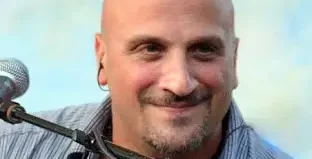By Elof Axel Carlson

We start our journey as a zygote, or fertilized egg, and become an embryo and fetus forming organ systems. We then become infants and children, then adolescents, and finally achieve adulthood and a heap of rights and activities as we raise families and enter our careers.
We become old, mature, age and become senescent in a dependent way requiring assisted living and then die. Biologists call this a life cycle. It is true of all multicellular life. Each stage of the life cycle has its vulnerabilities and its diverse activities. I am now 88 years old and Nedra and I will be shifting to the senescent age of our life cycles as we enter assisted living in a retirement community that is affiliated with Indiana University.
As a historian of science and a biologist, I am interested in how things originate. Humans have cared for the elderly at least as long ago as 500,000 BCE when fossil human remains revealed it was that of a cared for person we would classify as senescent. Canes have been retrieved from burials of Egyptian mummies some 30,000 years ago. The oldest dentures date back to 700 BCE.
Multigenerational households were constructed in Rome in 100 BCE. In the Christian era, in Iceland in 1200 CE persons over 70 were exempt from fasting on holidays. The Catholic Church cared for the elderly in Europe until the Protestant revolution, when the burden shifted to the government, and it introduced poor laws and the creation of almshouses, poor houses and poor farms. These were often poorly supported and dismal in their environment with the psychotic residents often chained or placed in strait jackets and the elderly were neglected because funding from taxes was minimal.
Poor houses were established in the Colonies shortly after the Pilgrims arrived. The first home for the aged in the U.S. was in 1823 in Boston. It was Dorothea Dix whose social work led to the separation of the paupers, “lunatics” and the aged from such poor houses and poor farms.
The germ theory was introduced in the 1870s and 1880s and the number of people surviving to old age increased dramatically, but it was not until 1935 that the U.S. and President Franklin Roosevelt introduced Social Security as a separate tax-gathering organization, allowing unemployed people in their old age to live in their own homes. It was not until 1965 when President Lydon Johnson’s Great Society created Medicare and Medicaid that the aged could shift from boarding houses and nursing homes to communities of assisted living.
Today there are 32,000 assisted living communities in the U.S. With humans living longer because of medical advances and these social measures, the population of those in their 60s or older will increase dramatically in the 21st century, and we will see far more assisted living communities that incorporate the hospitality of resorts with the medical care needs of the aged and the opportunities for music, lecture, exercise and a variety of eating choices for those who live in these facilities.
It will also lead to higher taxes and debates on how society should respond to these needs when the opportunities for acquiring private wealth are limited for most of our citizens whose incomes provide little surplus funds for investment in their future retirement.
It is our biology, not our ideology, that dictates our needs. It is our ideology or politics that dictates how we accommodate those needs.
Elof Axel Carlson is a distinguished teaching professor emeritus in the Department of Biochemistry and Cell Biology at Stony Brook University.







